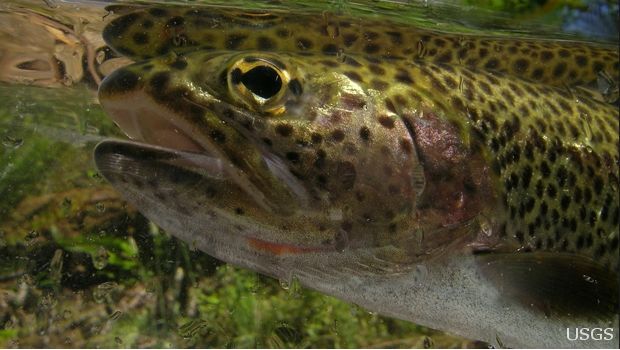This post was last updated on April 8th, 2014 at 05:35 pm
The Coastal Cutthroat Trout Species (Oncorhynchus clarkii clarkii)

The coastal Cutthroat Similar to salmon and steelhead spend most of their lives in the ocean. They will make an annual migration from their preferred area in the sea, to a particular river or stream to spawn. They are considered anadromous and will always make their way to a river in order to breed. Shortly after hatching, they will begin to feed and grow quickly. As juveniles (2 to 5 years of age) they will migrate to the sea where they will spend most of their lives. There are notable differences between the way the coastal cutthroat uses the sea over the salmon however. The cutthroats will not venture too far off shore. They tend to spend their lives near the mouths of the river where they were hatched. There are however exceptions, there have been cases of these trout moving close to 100 miles from their natal stream to access greater feeding areas etc. But they are overall rarely more than 6 miles from the shoreline and usually within close proximity to fresh water.
Migration and Status
Once the Juvenile trout have reached maturity they will proceed back to the river in which they were hatched in order to spawn and complete the cycle. These trout are native to Washington, Oregon and Northern California. They are in better general overall health as a species than some other sub species of cutthroat trout. There have however been obstacles for them. Estuary degradation, forest management and Dams/barriers have all had effects on these fish. This seems to be a resilient species of cutthroat overall. They are however still listed as a species of concern.
The coastal cutthroat tend to have small and medium sized spots of irregular shapes. This differs them from most other cutthroat species. Another major difference is the silvery sheen on these trout. As with most all anadromous fish they tend to have a lack of color while they are at sea. They will however take on a much more vibrant coloration once they get into the freshwater streams to spawn.
There are a few different variations of coastal cutthroat trout such as:
- Non Migratory Coastal Cutthroats: These fish will spend their entire lives in rivers and streams near the coast. They will never make a migration to salt water. They also tend to not live as long as the migratory fish, as well as not grow nearly as large.
- Migrating Cutthroat from freshwater: These are fish that will either live in a lake or a larger river. They will still migrate to spawn into smaller rivers and creeks.
- Standard Migrating Coastal Cutthroat: These are the most common fish mentioned earlier. They will migrate from the ocean in order to spawn in fresh water, returning to the ocean area shortly after breeding.
